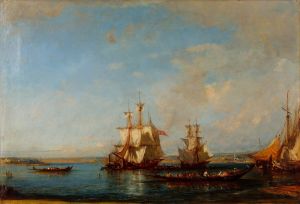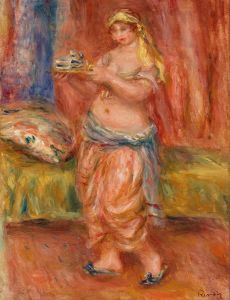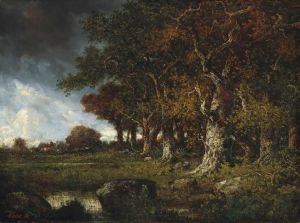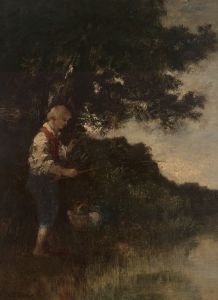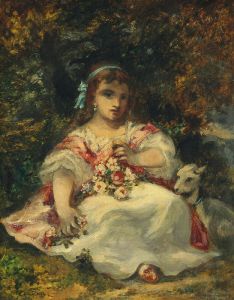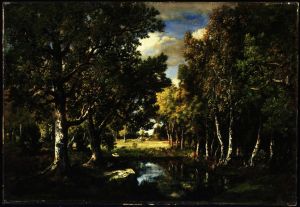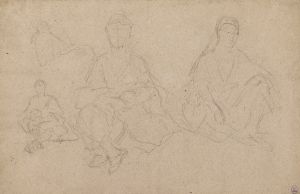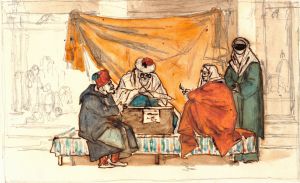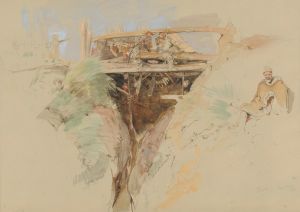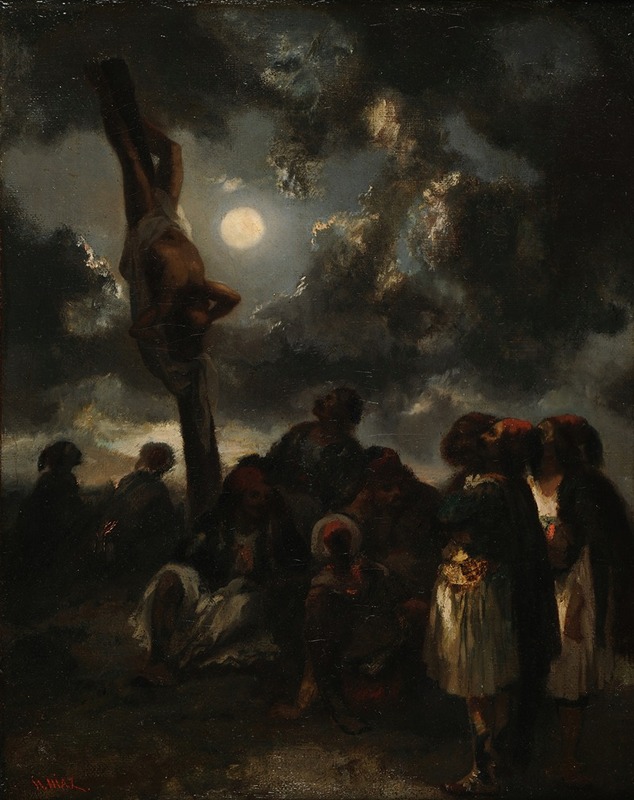
Supplice turc
A hand-painted replica of Narcisse-Virgile Diaz de La Peña’s masterpiece Supplice turc, meticulously crafted by professional artists to capture the true essence of the original. Each piece is created with museum-quality canvas and rare mineral pigments, carefully painted by experienced artists with delicate brushstrokes and rich, layered colors to perfectly recreate the texture of the original artwork. Unlike machine-printed reproductions, this hand-painted version brings the painting to life, infused with the artist’s emotions and skill in every stroke. Whether for personal collection or home decoration, it instantly elevates the artistic atmosphere of any space.
Narcisse-Virgile Diaz de la Peña was a prominent 19th-century French painter, known for his association with the Barbizon School, a movement that emphasized naturalism and the depiction of rural landscapes. While Diaz de la Peña is primarily celebrated for his landscapes and woodland scenes, he also explored other subjects, including Orientalist themes, which were popular in 19th-century European art.
"Supplice turc" (Turkish Punishment) is one of Diaz de la Peña's works that falls under the Orientalist category. Orientalism in art refers to the depiction of Eastern societies, often characterized by a romanticized or exotic portrayal. This movement was influenced by the increased interaction between Europe and the Middle East, North Africa, and Asia during the 19th century, driven by colonial expansion and trade.
The painting "Supplice turc" reflects the fascination with Eastern cultures and the often dramatic and sensationalized interpretations that were common in Orientalist art. While specific details about the painting's creation, such as its exact date or the circumstances of its commission, are not widely documented, it is consistent with the themes and styles that Diaz de la Peña explored during his career.
Diaz de la Peña's work is characterized by a rich use of color and a dramatic interplay of light and shadow, which can also be seen in "Supplice turc." His technique often involved loose brushwork and a vibrant palette, contributing to the emotional intensity and atmospheric quality of his paintings. These elements would have been employed to enhance the dramatic subject matter of "Supplice turc," capturing the viewer's attention and evoking a sense of intrigue and mystery.
The Orientalist genre, including works like "Supplice turc," has been the subject of much scholarly debate and critique. While these works were popular in their time for their exotic appeal, modern perspectives often critique them for perpetuating stereotypes and presenting a skewed view of Eastern cultures. Artists like Diaz de la Peña, who engaged with Orientalist themes, were part of a broader trend in European art that both reflected and shaped contemporary attitudes towards the East.
Despite the controversies surrounding Orientalism, Diaz de la Peña's contributions to art, particularly through his involvement with the Barbizon School, remain significant. His ability to capture the nuances of light and color, whether in a serene forest scene or a dramatic Orientalist composition, showcases his versatility and skill as an artist.
In summary, "Supplice turc" by Narcisse-Virgile Diaz de la Peña is an example of 19th-century Orientalist art, reflecting the era's fascination with Eastern themes and the artist's distinctive style. While specific details about the painting are scarce, it remains a part of Diaz de la Peña's diverse body of work, illustrating his engagement with both natural and exotic subjects.







